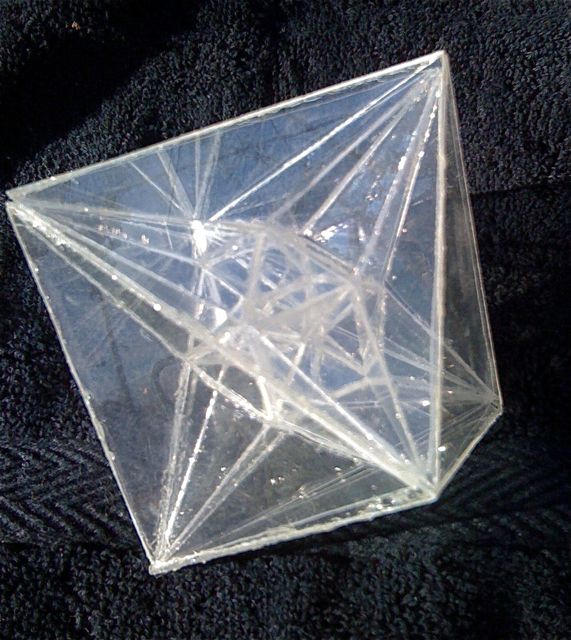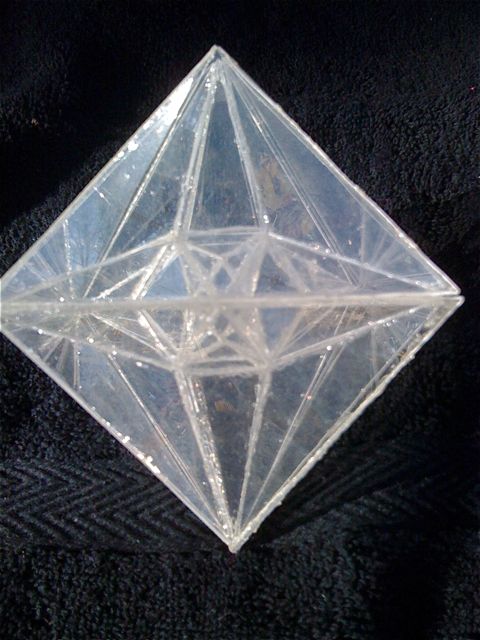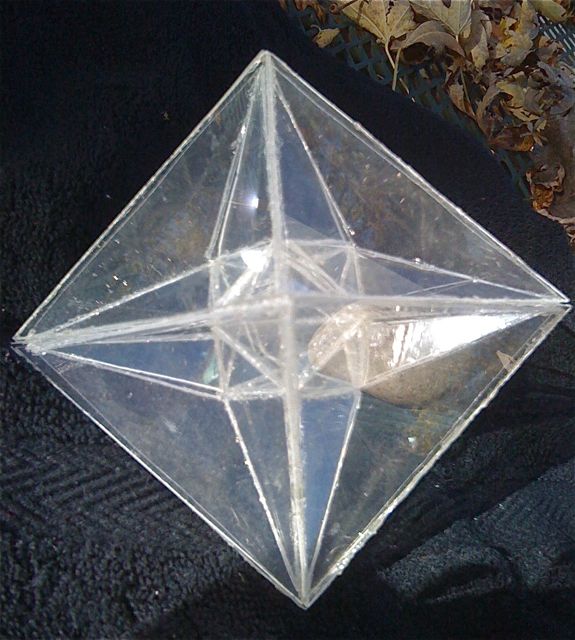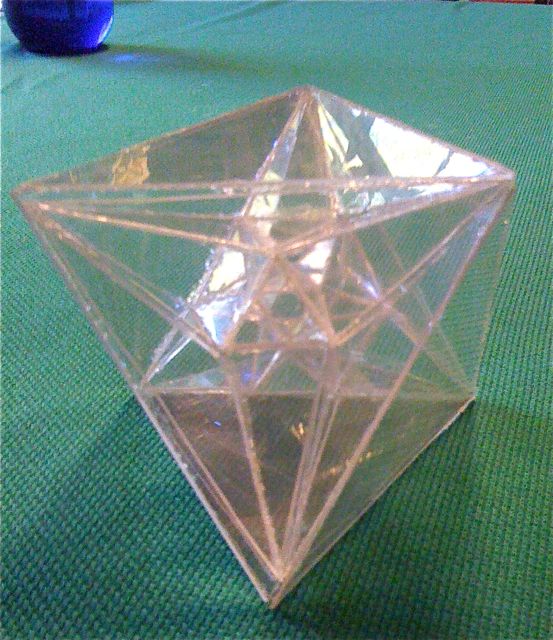24-Hedroid
24-HedroidHere is a model that I built that represents the "three dimensional shadow" of a symmetrical four-dimensional figure. The model is unusual because I chose to use clear plastic planes rather than just depicting the edges with a wire frame.
One way to describe this object is to say that it partitions the entire 3-dimensional space into 24 parts. Each part is a volume enclosed by eight intersecting planes. So each volume is bounded by an octahedron. Although the sizes of the volumes are not all the same and although the faces are not all the same shape and although the edges are not all the same length, these differences are distortions caused by the projection of the 4-D figure into our 3-D world. In four dimensions, all 24 octahedrons would be regular and identical. All the volumes, faces, and edges of the octahedrons would be alike if we could experience the object in four dimensions. In both the 4-D object and in my model, each volume shares its eight faces with eight adjacent octahedrons. So two octahedra share a face, three octahedra share an edge, and six octahedra share a vertex.
To count the octahedra, begin with the one in the middle. Eight octahedra touch its faces. Six additional octahedra touch its vertices. Eight more fit around those six. That totals 23. The 24th octahedron is "inside out", and consists of all the space outside of the model. Some people like to think of this model as being a "3-dimensional shadow" of the 4-D figure.
The photos do not clearly show the interior planes of the model. It is only by holding the model and turning it that a person can see all the interior planes.
This was a first attempt and I would like to build another that is more precise and beautiful. It was fun to work out the angles. The tesseract could also be modeled using this technique.
24-Hedroid



